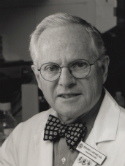| Abstract: |
Accumulating evidence for a unicellular (clonal) origin of leukemia, based on the studies of Fialkow and coworkers employing isozymes of the X-linked gene, glucose-6-phosphate dehydrogenase (G6PD), as clonal markers,1 combined with evidence from rigorous karyotyping,2 leaves little doubt that acute nonlymphocytic leukemia (ANLL), chronic myelogenous leukemia, and acute lymphoblastic leukemia originate in the transformation and subsequent clonal expansion of a hematopoietic precursor, often (at least in the myeloid leukemias) a precursor with multipotent developmental capabilities. The goal of antileukemic therapy seems clear enough: to destroy the transformed blastic clone and encourage repopulation by residual normal precursors. Common sense dictates that. © 1986, Massachusetts Medical Society. All rights reserved. |



